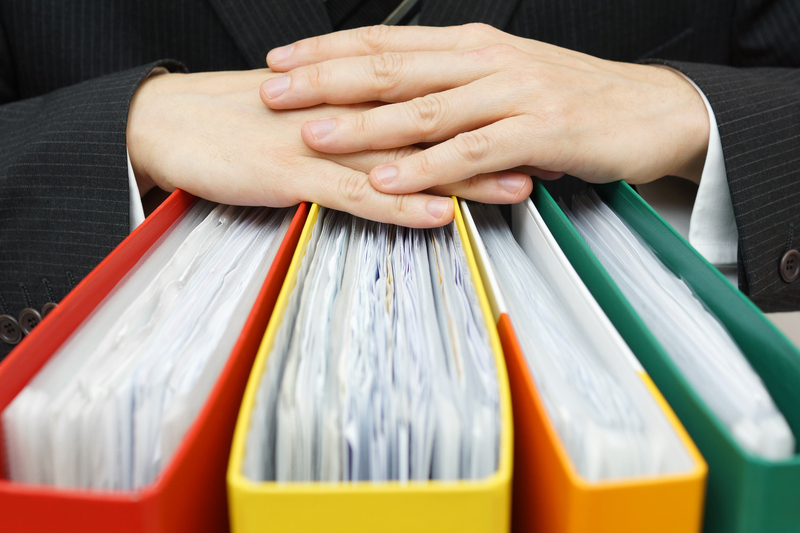The Do's and Don'ts of Packing When Relocating
Relocating to a new place marks an exciting chapter, but the journey can be daunting without an effective packing plan. Whether you are moving for work, family, or adventure, packing for a move can make or break your experience. Discover the essential packing tips for relocating and avoid common pitfalls through this comprehensive guide on the do's and don'ts of packing when relocating.
Why Proper Packing Matters When Relocating
When you move, effective packing is more than just putting your belongings in boxes. It safeguards your items, reduces moving stress, helps you stay organized, and can even save money by preventing breakage or loss. Understanding the best practices of packing ensures a smoother relocation and a happier settling-in experience.

The Do's of Packing When Relocating
1. Start Early and Create a Plan
- Begin packing well in advance of your moving date. Packing in a rush often leads to forgotten items and increased stress.
- Make a sorting and packing schedule. Allocate specific days or weekends to tackle different rooms or categories.
- List out essential and non-essential items, so you know what can be packed early versus last minute.
2. Declutter Before Packing
- Sort through every room and create piles: keep, donate, sell, or discard.
- Minimize what you pack by letting go of duplicates, outgrown clothes, and unused gadgets.
- Consider donation or recycling options to reduce waste and lighten your load.
3. Gather The Right Packing Supplies
- Obtain sturdy moving boxes in various sizes, strong packing tape, bubble wrap, and packing paper.
- Use specialty boxes for fragile items, clothing, and electronics for better protection.
- Label your markers, scissors, zip-top bags, and stretch wrap on hand before you start.
- Remember to get mattress covers and furniture blankets for large items.
4. Label Everything Clearly
- Write clear and visible labels on each box indicating its contents and destination room.
- Use a color-coded system for different rooms to facilitate easy unloading at your new home.
- Mark boxes containing fragile items with 'FRAGILE' and indicate 'this side up'.
5. Pack Room-by-Room
- Focus on one room at a time to stay organized and reduce confusion.
- Keep similar items together and label them accordingly.
- Pack heavier items at the bottom and lighter ones on top within each box.
6. Protect Your Valuables
- Wrap fragile items like glassware, electronics, and artwork in bubble wrap or soft towels.
- Consider transporting valuables, important documents, and jewelry yourself rather than with movers.
- Back up important digital files to the cloud or an external hard drive for added security.
7. Prepare an Essentials Box
- Pack a first-night kit with essentials like toiletries, basic cookware, clothing, medication, chargers, and important documents.
- Label this box 'Essentials: Open First' and keep it accessible during the move.
8. Notify and Prepare Appliances
- Defrost, clean, and dry refrigerators and freezers at least 24 hours before the move.
- Disconnect appliances (washer, dryer, oven) and secure loose parts.
- Refer to appliance manuals for specific moving instructions to avoid damage in transit.
9. Take Inventory
- Register each box and larger item in an inventory list as you pack to track everything you are moving.
- For valuable or specialty items, take photos or videos for insurance records.
10. Stay Positive and Flexible
- Approach packing as an opportunity to reset and start fresh in your new space.
- Be ready to adapt if things don't go exactly as planned, remaining resilient during the process.
The Don'ts of Packing When Relocating
1. Don't Procrastinate
- Last-minute packing can lead to disorganization, incomplete packing, and damage to your belongings.
- Leaving packing for the moving week almost guarantees a chaotic move.
2. Don't Overpack Boxes
- Don't fill large boxes with heavy items like books or dishes--this can make them hard or impossible to lift and prone to breaking.
- Keep each box under 50 pounds; spread out heavier items among several boxes.
3. Don't Ignore Insurance for Your Move
- Not all moving companies cover loss or damage to personal belongings during transit.
- Always check your moving insurance options or renter's/homeowner's policy to ensure adequate coverage.
4. Don't Leave Packing Dangerous Materials to the Last Minute
- Items such as paint, chemicals, flammable liquids, or perishable food require careful handling and often cannot be moved by professionals.
- Review your movers' restrictions and properly dispose of or use up these items ahead of time.
5. Don't Forget to Measure Large Items
- Skimping on measuring your furniture or appliances can lead to issues when they don't fit through doorways or in your new space.
- Measure all bulky items and doorways before moving day to avoid surprises.
6. Don't Mix Unrelated Items in the Same Box
- Mixing kitchen utensils with books or toys with bathroom toiletries makes unpacking more complicated and disorganized.
- Keep like items together and mark boxes for easy identification.
7. Don't Pack Perishable Foods
- Perishable foods can spoil, cause odors, or attract pests.
- Use up food supplies in the weeks leading to your move, and avoid packing anything that's easily perishable.
8. Don't Forget About Pets & Plants
- Packing pets or plants with your household goods is a recipe for disaster.
- Arrange for pet sitters and plan safe transportation for plants, considering the climate and travel time.
9. Don't Forget to Update Your Address and Utilities
- Overlooking address and utility changes can lead to missed bills or service interruptions at your new place.
- Schedule updates at least two weeks ahead and notify relevant institutions of your move.
10. Don't Underestimate Time and Stress
- Packing is often more time-consuming than expected. Underestimating this can lead to haphazard packing and missed essentials.
- Expect the move to take longer, and allocate time for packing, cleaning, and coordinating logistics.
Packing Checklist for a Successful Relocation
Staying organized and methodical is crucial for a seamless move. Use the following checklist to guide your packing process:
- Start with items you use the least (out-of-season clothing, seldom-used decor, books, etc.)
- Label every box: content, room destination, fragile or not, and personal value
- Pack essentials and everyday items last (toiletries, kitchenware, bedding)
- Keep valuables, documents, and irreplaceable items with you on moving day
- Disassemble furniture if possible, keeping hardware in labeled zip-top bags
- Take photos of cable setups for electronics to simplify reassembly
- Double-check attics, basements, garages, and sheds to ensure nothing's left behind
- Confirm moving date and details with your moving company or helpers
Expert Packing Tips for a Smooth Move
Use What You Own
- Pack items inside suitcases, laundry bins, and storage baskets for added efficiency.
- Wrap fragile pieces with towels, blankets, or clothing for extra cushion and to maximize space.
Seal Liquids and Prevent Leaks
- Place plastic wrap under the caps of toiletries and condiments before screwing lids back on.
- Pack all liquids in a separate, sealed bag or container to avoid spills.
Protect Electronics and Cords
- Label each cord and device with masking tape for stress-free set-up in your new home.
- Use original boxes and manuals whenever possible for devices and appliances.
Photograph Box Contents
- Take a quick photo of each box's contents before sealing; this online record can be a lifesaver during unpacking.

Frequently Asked Questions About Packing When Moving
Q: How soon should I start packing for a move?
A: Begin packing for a move at least 4-6 weeks before your scheduled moving day. Start with items you use most sparingly and gradually progress to the essentials.
Q: What materials do I need most when packing for relocation?
A: The must-have packing materials are sturdy boxes, packing tape, bubble wrap, packing paper, markers, zip-top bags, and stretch wrap. Specialty boxes for breakables and wardrobe boxes for hanging clothes are useful for extra protection.
Q: Should I hire professional packers or pack myself?
A: Hiring professionals can save time and reduce stress, but it's more expensive. Packing yourself gives you full control of the process and can save money, especially if you follow systematic packing strategies.
Q: What is the best way to pack fragile items?
A: Wrap each fragile item individually with bubble wrap or packing paper, cushion the bottom and sides of boxes, and clearly label each box as 'Fragile.' Don't overfill, and avoid mixing heavy and delicate items.
Conclusion: Make Your Relocation Stress-Free with Smart Packing
Relocating is a major life event, but it doesn't have to be overwhelming. By following the do's and don'ts of packing when relocating, you can make the process efficient, safe, and as stress-free as possible.
Plan early, declutter ruthlessly, label strategically, and protect your valuables. Avoid procrastination, over-packing, and neglecting moving insurance. With these packing tips for relocation, your journey to a new home will be smoother, more organized, and light on surprises.
Remember: Every item you pack is a step toward an exciting new beginning.



